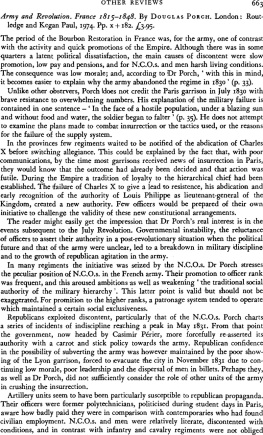Sellers - The Market Revolution,1815-46
Here you can read online Sellers - The Market Revolution,1815-46 full text of the book (entire story) in english for free. Download pdf and epub, get meaning, cover and reviews about this ebook. City: Oxford, year: 1992;1991, publisher: Oxford University Press, genre: Politics. Description of the work, (preface) as well as reviews are available. Best literature library LitArk.com created for fans of good reading and offers a wide selection of genres:
Romance novel
Science fiction
Adventure
Detective
Science
History
Home and family
Prose
Art
Politics
Computer
Non-fiction
Religion
Business
Children
Humor
Choose a favorite category and find really read worthwhile books. Enjoy immersion in the world of imagination, feel the emotions of the characters or learn something new for yourself, make an fascinating discovery.

The Market Revolution,1815-46: summary, description and annotation
We offer to read an annotation, description, summary or preface (depends on what the author of the book "The Market Revolution,1815-46" wrote himself). If you haven't found the necessary information about the book — write in the comments, we will try to find it.
The Market Revolution,1815-46 — read online for free the complete book (whole text) full work
Below is the text of the book, divided by pages. System saving the place of the last page read, allows you to conveniently read the book "The Market Revolution,1815-46" online for free, without having to search again every time where you left off. Put a bookmark, and you can go to the page where you finished reading at any time.
Font size:
Interval:
Bookmark:
Scholarship proliferating under the meritocratic competition of the academic marketplace has pushed historians into ever narrower chronological/topical fields, where specialized literatures and methodologies inhibit integrative analysis and deviation from orthodoxy. Even for the limited period of this volume, a comprehensive bibliography would be overwhelming while soon outdated. Consequently many works valuable for data or cited in the footnotes are omitted here to focus on those most critical for interpretation.
Environmental crisis underscores historys foundation in human adaptions to, and impacts on, the land. The ecological perspective of Carolyn Merchant, Ecological Revolutions: Nature, Gender, and Science in New England (Chapel Hill, 1989), illuminates natures complex interactions with every aspect of human society, ranging from mode of production to gender. Human impacts on the same region are further delineated by William Cronon, Jr., Changes in the Land: Indians, Colonists, and the Ecology of New England (New York, 1983)
The Americans who lived most harmoniously with the land are well surveyed in Wilcomb E. Washburn, The Indian in America (New York, 1975). For the impact of European invasion and the fur trade: Francis Jennings, The Invasion of America: Indians, Colonialism, and the Cant of Conquest (Chapel Hill, 1975); Harold Hickerson, Fur Trade Colonialism and the North American Indians, Journal of Ethnic Studies 1 (1973): 15-44; Calvin Martin, Keepers of the Game: Indian-Animal Relationships and the Fur Trade (Berkeley, 1978); and Shepard Krech III, ed., Indians, Animals, and the Fur Trade: A Critique of Keepers of the Game (Athens, Ga., 1981).
For white attitudes and white/Indian relations: Roy Harvey Pearce, Savagism and Civilization: A Study of the Indian and the American Mind (Baltimore, 1967); James Axtell, The Invasion Within: The Contest of Cultures in Colonial North America (New York, 1985); and James Axtell, After Columbus: Essays in the Ethnohistory of Colonial North America (New York, 1988).
For the southeastern tribes under heaviest white pressure during this period: Peter H. Wood, Gregory A. Waselkov, and M. Thomas Hatley, Powhatans Mantle: Indians in the Colonial Southeast (Lincoln, 1989); James H. Merrell, The Indians New World: Catawbas and Their Neighbors from European Contact through the Era of Removal (Chapel Hill, 1989); William G. McLoughlin, Cherokee Renascence in the New Republic (Princeton, 1987); J. Leitch Wright, Jr., Creeks and Seminoles: Destruction and Regeneration of the Muscogulge People (Lincoln, 1986); and Michael D. Green, The Politics of Indian Removal: Creek Government and Society in Crisis (Lincoln, 1982).
For federal Indian policy and Jacksonian aggression: Francis Paul Prucha, The Great Father: The United States Government and the American Indians (2 vols., Lincoln, 1984); Ronald N. Satz, American Indian Policy in the Jacksonian Era (Lincoln, 1975); Robert V. Remini, Andrew Jackson (3 vols., New York, 1977-1984); Michael P. Rogin, Fathers and Children: Andrew Jackson and the Subjugation of the American Indian (New York, 1975); and Mary Young, The Exercise of Sovereignty in Cherokee Georgia, Journal of the Early Republic 10 (Spring 1990): 43-63
This basic human/land relationship is well surveyed by Paul W. Gates, The Farmers Age: Agriculture, 1815-1860 (New York, 1960). For the North: Clarence H. Danhof, Change in Agriculture: The Northern United States, 1820-1870 (Cambridge, Mass., 1969); and Jeremy Atack and Fred Bateman, To Their Own Soil: Agriculture in the Antebellum North (Chicago, 1987). For the South: Lewis C. Grays encyclopedic History of Agriculture in the Southern United States to 1860 (2 vols., Washington, 1933); and Gavin Wrights more analytical The Political Economy of the Cotton South: Households, Markets, and Wealth in the Nineteenth Century (New York, 1978).
Our historical mythology of pervasive enterprise long blinded scholars to the extent of subsistence farming revealed by Percy W. Bidwells richly documented Rural Economy in New England at the Beginning of the Nineteenth Century, Connecticut Academy of Arts and Sciences, Transactions 20 (New Haven, 1916): 241-399. The issue was not squarely joined until James T. Lemon, The Best Poor Mans Country: A Geographical Study of Early Southeastern Pennsylvania (Baltimore, 1972), essayed an empirical demonstration of farmer eagerness for markets. A counterview of early rural culture as familial, cooperative, and self-sufficient was presented by Michael Merrill, Cash is Good to Eat: Self-Sufficiency and Exchange in the Rural Economy of the United States, Radical History Review 4 (Winter 1977): 42-71; and James A. Henretta, Families and Farms: Mentalite in Pre-Industrial America, William and Mary Quarterly 25 (Jan. 1978): 3-32. For a review of the ensuing debate: Allan Kulikoff, The Transition to Capitalism in Rural America, William and Mary Quarterly 46 (Jan. 1989): 120-44.
Extensive persistence of subsistence farming is documented by the rural community studies in the following section and by the previously cited agricultural historians Atack, Bateman, Danhof, and Wright. Advocates of a commercial orientation, on the other hand, while often overgeneralizing from ambiguous evidence, have illuminated when and how commercialization occurred. Extension of market production along the seaboard in response to European demand for wheat in the late eighteenth and early nineteenth centuries accounts for the findings of Lemon; Robert D. Mitchell, Commercialism and Frontier: Perspectives on the Early Shenandoah Valley (Charlottesville, 1977); and Joyce Appleby, Commercial Farming and the Agrarian Myth in the Early Republic, Journal of American History 68 (Mar. 1982): 831-48.
Another factor felt first in lower New England was an agrarian crisis of land scarcity, as delineated in the rural community studies for the region and in Kenneth Lockridge, Land, Population, and the Evolution of New England Society 1630-1790, Past and Present 39 (April 1968): 62-80. This helps explain the evidence for commercialization reported in Bettye Hobbs Pruitt, Self-Sufficiency and the Agricultural Economy of Eighteenth-Century Massachusetts, William and Mary Quarterly 41 (July 1984): 333-64, and a series of articles (Journal of Economic History) by Winifred B. Rothenberg: The Market and Massachusetts Farmers, 1750-1855, 11 (June-1981): 183-314, Markets, Values, and Capitalism: A Discourse on Method, 44 (June 1984): 171-78, The Emergence of a Capital Market in Rural Massachusetts, 1730-1838, 45 (Dec. 1985): 781-808, and The Emergence of Farm Labor Markets and the Transformation of the Rural Economy: Massachusetts, 1750-1855, 48 (Sept. 1988): 537-66. The New England transition to commercial production is superbly delineated in Christopher Clark, The Roots of Rural Capitalism: Western Massachusetts, 1780-1860 (Ithica, 1990).
The best sources for rural culture, agrarian crisis, the transition to market production, and associated social/demographic change are such closely focused studies as Hal Barron, Those Who Stayed Behind: Rural Society in Nineteenth Century New England (New York, 1984); John L. Brooke, The Heart of the Commonwealth: Society and Political Culture in Worcester County, Massachusetts, 1713-1861
Font size:
Interval:
Bookmark:
Similar books «The Market Revolution,1815-46»
Look at similar books to The Market Revolution,1815-46. We have selected literature similar in name and meaning in the hope of providing readers with more options to find new, interesting, not yet read works.
Discussion, reviews of the book The Market Revolution,1815-46 and just readers' own opinions. Leave your comments, write what you think about the work, its meaning or the main characters. Specify what exactly you liked and what you didn't like, and why you think so.










